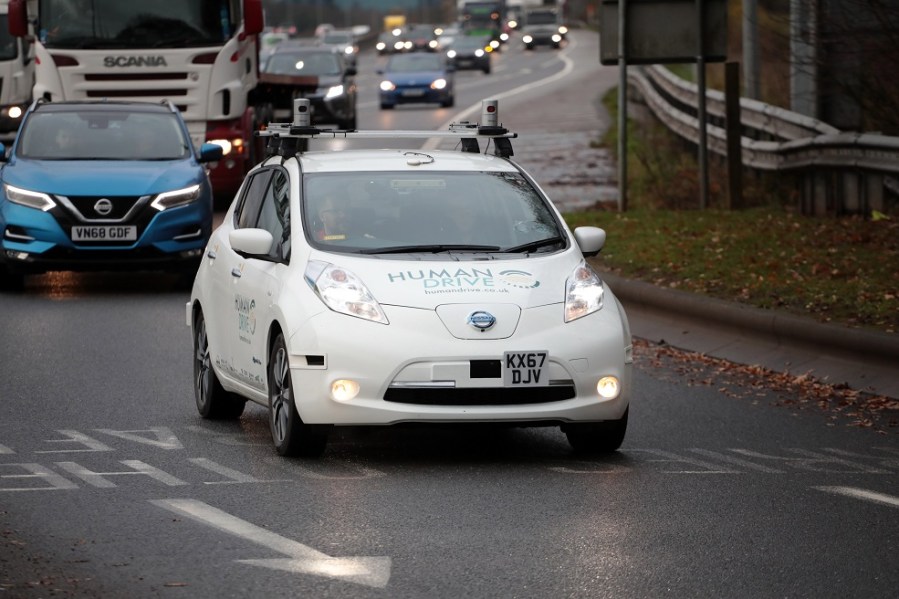A self-navigating Nissan Leaf has successfully driven itself for 230 miles, which is the longest and most complex journey undertaken so far on UK roads by an autonomous car.
The car, fitted with GPS, radar, Lidar laser measurement technology and cameras that build up a perception of the world around it, travelled from Cranfield, Bedfordshire, to the Nissan factory in Sunderland. The route included motorways, complex roundabouts and high-speed country lanes with no road markings, white lines or kerbs. The autonomous technology activated along the route whenever the vehicle needed to stop, start or change lanes – it even paused at several service stations to recharge its batteries. Two engineers were on board to monitor it at all times.
The achievement was the culmination of 30 months’ work by the HumanDrive consortium, a £13.5 million project jointly funded by the UK government through the Centre for Connected and Autonomous Vehicles (CCAV) and Innovate UK, plus nine other consortium partners. The collaborative project explores how new technologies can make autonomous vehicle systems feel human-like and natural.
Why is this relevant to classics? Well, the ultimate goal of all this technology is to take any responsibility away from the driver to eliminate the main cause of accidents – driver error. Could it end up restricting our right to drive those very classics on the road? There’s surely a long way to go, but the technology is developing fast.






